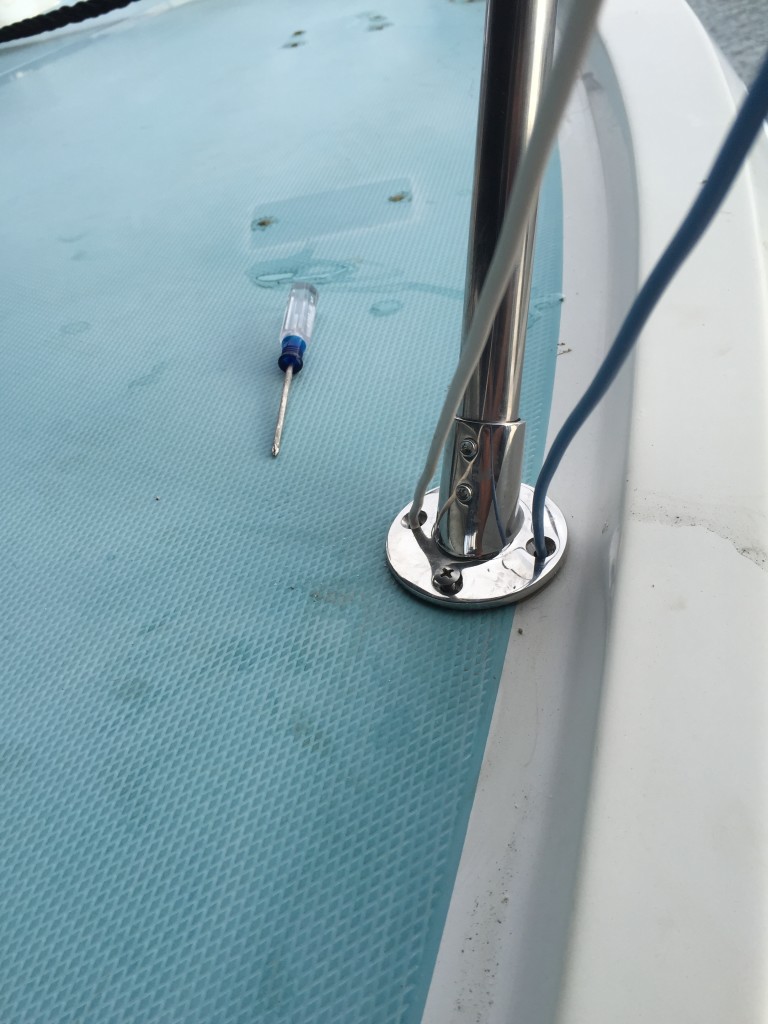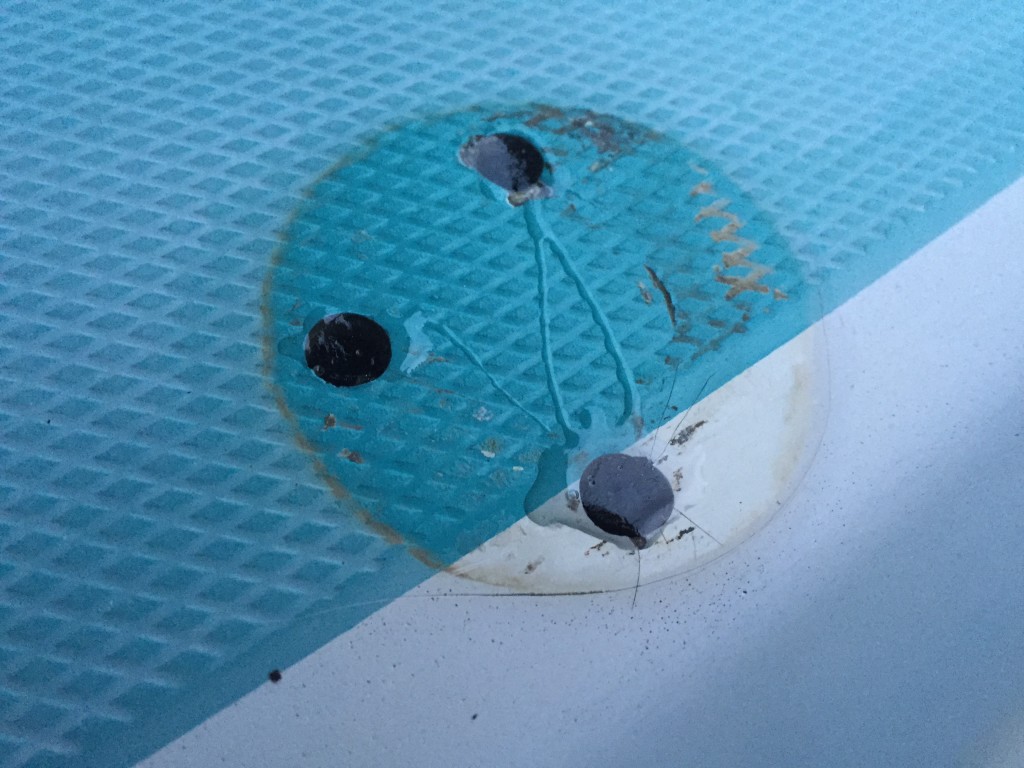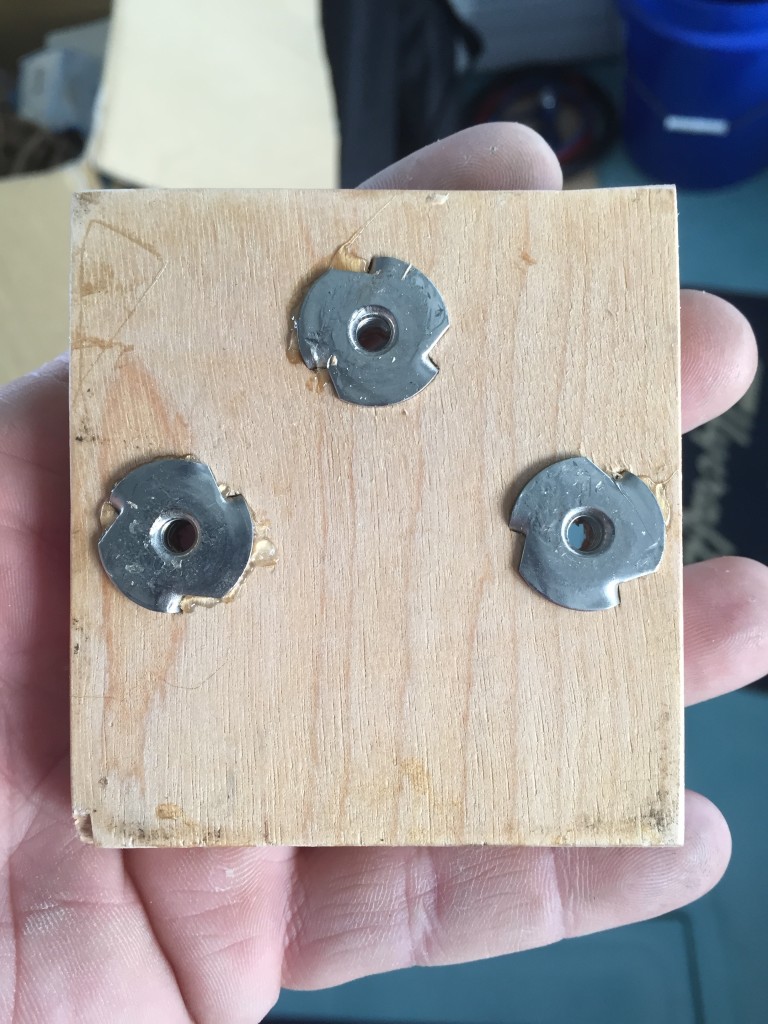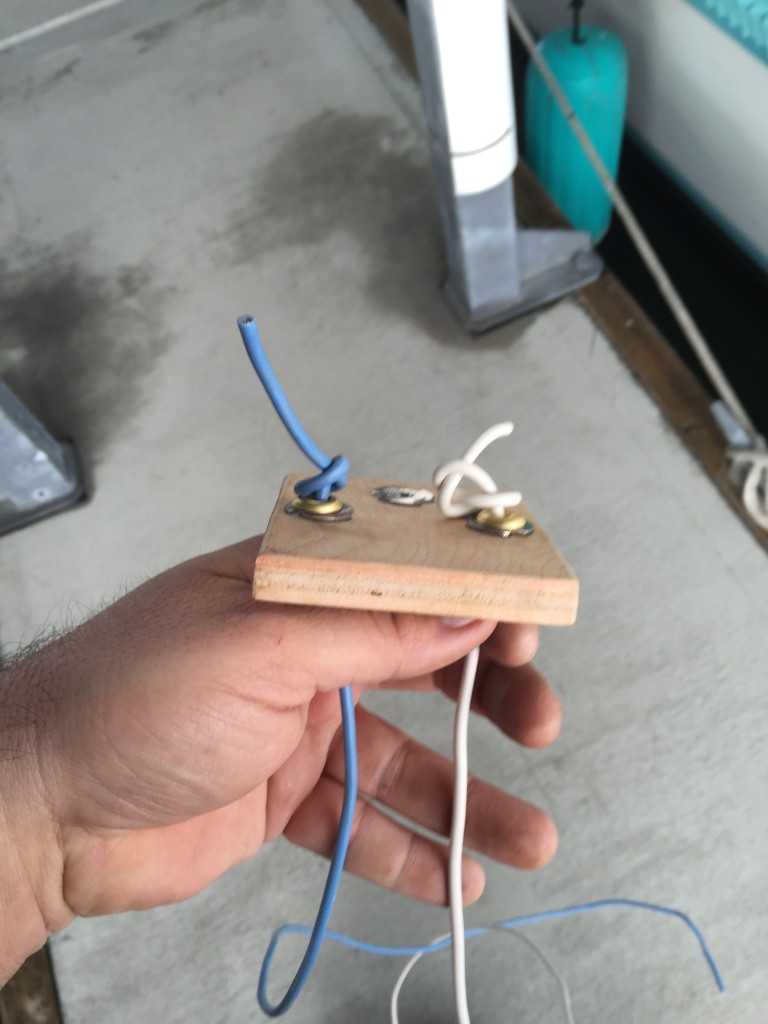As part of my recent (and currently ongoing) winter project of installing a windlass, I had the perfect opportunity to take care of a few other items that could use attention. One of which was re-bedding my bow rail stanchion bases. Since I had interior panels removed to run wiring, there was no better time to just do it. It wasn’t exactly a pleasant job, but it’s done, and better than before. I used a little trick to make the job easier that I’ll share.
I had the original chrome plated bases, that while still functional were looking a little rough. I figured if I was going through the trouble of taking things apart, I might as well replace them with new stainless steel bases.
First I removed the old fasteners. Several broke as I tried to back them out. The original T-nuts set into the underside of the deck were not stainless, and of course had rusted and showed evidence of leaking. I drove the old T-nuts out and cleaned out the old holes, removing as much coring as I could with a small screwdriver and a shop vac.
Next, I filled all the holes with epoxy. Before doing so, I sealed the bottom side of the holes with masking tape. After doing this procedure a few times, I’ve had the best luck using five minute epoxy that comes with the attached mixing tube. I simply “drizzle” the epoxy into each hole, and as it levels I add more until full. After sufficient time for the epoxy to set up, I drilled new hole. Now, the fasteners are going through epoxy rather than just coring.
Next I needed a solution for how to bolt the stanchion bases to the deck. If access was decent, I would have simply through-bolted them with nuts and washers, but that was just not the case, and trying to fit a hand and a wrench and manage nuts and washers would have been awkward at best. So I came up with another plan.
I made backing plates with 3/8″ plywood, which I drilled to match the hole pattern on the stanchion bases and inserted stainless T-nuts set in a dab of epoxy.
Since accessing the underside wouldn’t be easy, I pushed a piece of wire down two of the holes in base. Back inside the boat, I ran each wire through the appropriate hole (I used two colors to make sure), slipped a washer over each wire, and tied a not in it. I wanted the plywood backing plate and T-nuts to stay in place if I ever removed the stanchion bases, so I put a little bit of 3M 5200 on each plate.
 Back on deck, I gently pulled on both wires until they came tight as the plate met the underside of the deck. As I continued pulling on the wires, I used a small screwdriver to line up the third hole. With not much fuss, I was able to get the first screw started and snugged. I then, one at a time, pushed the wires through the holes and threaded the remaining screws. Once I had all the screws started, I backed them off far enough that I could apply sealant to the underside of the stanchion base and screws before tightening everything down.
Back on deck, I gently pulled on both wires until they came tight as the plate met the underside of the deck. As I continued pulling on the wires, I used a small screwdriver to line up the third hole. With not much fuss, I was able to get the first screw started and snugged. I then, one at a time, pushed the wires through the holes and threaded the remaining screws. Once I had all the screws started, I backed them off far enough that I could apply sealant to the underside of the stanchion base and screws before tightening everything down.
I’m sure I’m not the first person to use this method, but it certainly worked well for my application. Perhaps it might make your job a little easier, too.




Well thought out ! That’s the way many Pro’s have done it. I’m glad you went back sealed the bases. Well Done !!
Good idea Steve, my bow rail already has SS bases but the flybridge ones are ugly and not very accessible. That method might work.
Clever!